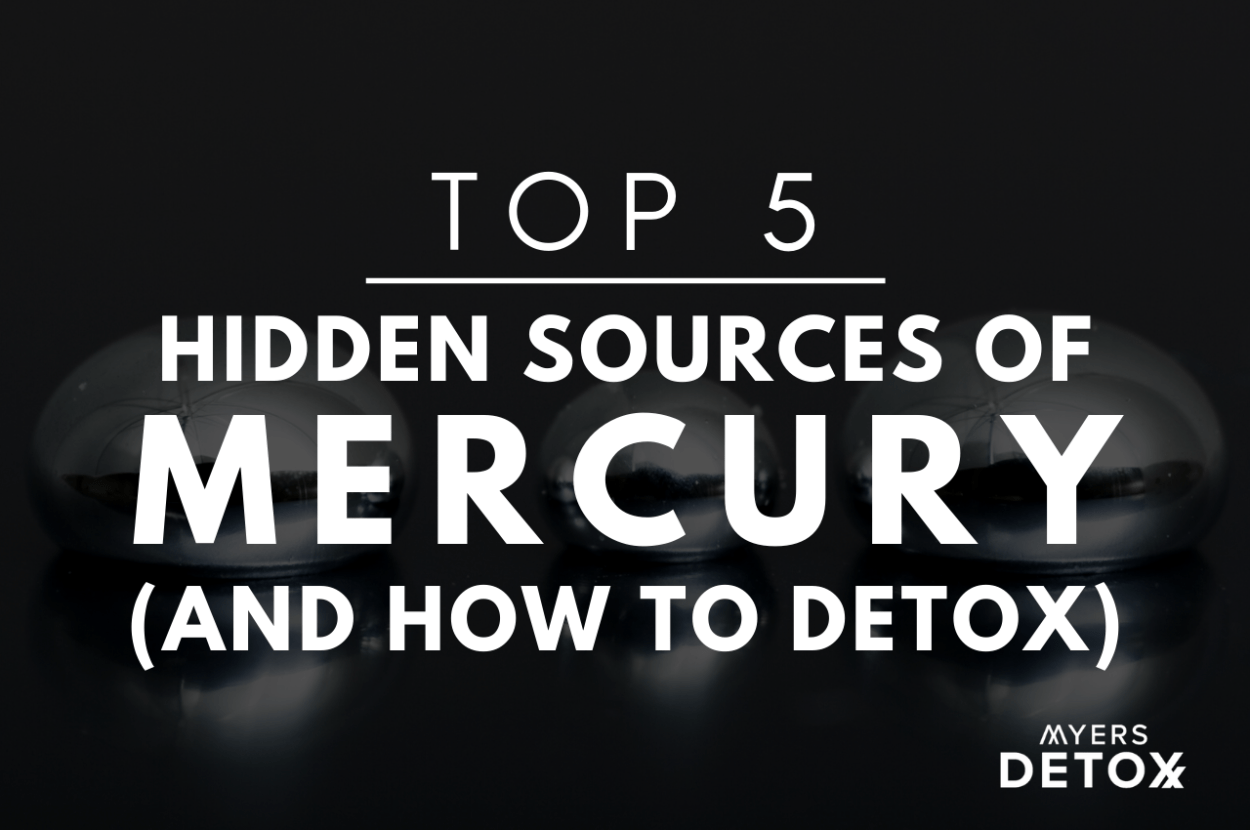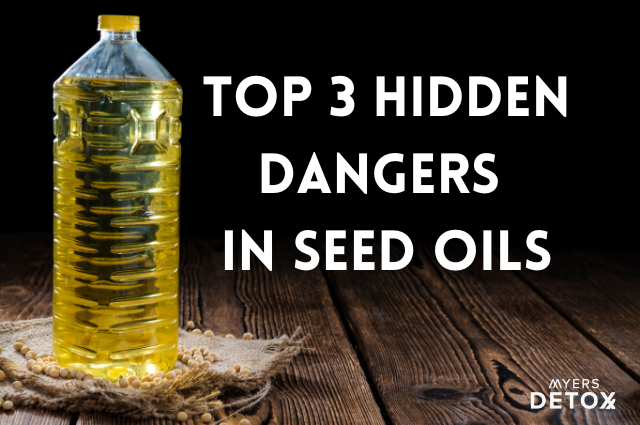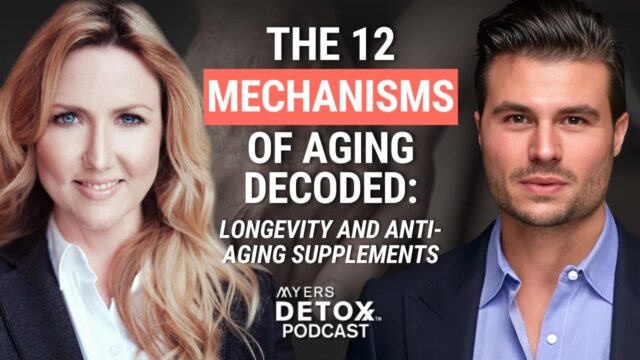Mercury is one of the most toxic heavy metals in our modern world. It is the number one metal toxicity from which millions suffer. We’re all exposed to mercury on a daily basis — it’s in our air, food, personal products, dental fillings and more [1-17]. It’s unavoidable. But there may be some sources of mercury exposure that you might not be aware of…
In the past, mercury poisoning was usually acute. People who worked in coal mines or chemistry labs would fall sick after brief but intense exposure to mercury.
Today, that kind of exposure is rare. However, mercury toxicity is still a major problem. Instead of one big dose of mercury, you’re exposed to small amounts every day, which eventually cause symptoms.
Over time, mercury builds up in your body — and if you don’t detox it, mercury will gradually sap your energy and wellbeing. After years of low-level exposure, mercury can build up enough to cause a variety of health problems, including fatigue, brain fog, and more.
For the sake of your long-term wellness, it’s essential that you minimize your daily mercury exposure.
With that in mind, here are four hidden sources of mercury and how to avoid them. I’ll also talk about how you can detox mercury that’s already accumulated in your body.
1. Air Pollution
Coal-burning power plants are the single biggest source of environmental mercury[1].
Coal plants are common across the entire United States. They’re especially prevalent on the East Coast, and they power almost every major city in the U.S.
If you live in a city or near a power plant, you’re breathing in a small but significant amount of mercury every day. That mercury ends up stored in hard-to-reach parts of your body, like your brain and central nervous system, and it builds up over time[2].
Unfortunately, unless you move somewhere remote, there’s not much you can do to avoid airborne mercury pollution. It’s an inevitable part of city life (especially since the United States Environmental Protection Agency (EPA) relaxed mercury emission guidelines in early 2020).
However, you can detox mercury with a gentle daily detoxifier like CitriCleanse, which is designed to mobilize heavy metals and help your body remove them.
2. Diesel Exhaust
Traffic pollution is another hidden source of mercury.
The EPA has run several studies looking at mercury content in vehicle exhaust. They found that standard car exhaust contains a moderate amount of mercury, and diesel exhaust contains about 10 times more mercury than standard exhaust[3][4].
Diesel exhaust is classified as a type 1 carcinogen, directly causing lung cancer and possibly bladder cancer[5]. In addition to mercury, it contains several other toxic metals and semimetals, including thallium, chromium, beryllium, and antimony[4].
To minimize your exposure to mercury, make sure you keep your windows up when you’re in traffic. If you own a vehicle with a diesel engine, consider trading it in for something less toxic. You may also want to avoid driving behind trucks, as they tend to use diesel fuel.
3. Dental Amalgam Fillings
Mercury amalgam fillings (also called “silver fillings”) have been the standard in dentistry for decades. They’re still in use today, although they’re slowly being replaced by composite fillings.
If you’ve had a major cavity filled in your lifetime, there’s a good chance your dentist installed a mercury amalgam. Check your teeth — if the filling is silver, it’s mercury. If it’s the same color as your tooth, it’s a composite.
Mercury amalgam fillings continuously release a small amount of mercury vapor into your mouth, especially when they’re disturbed (from chewing, for example)[6][7].
The fillings last for about 15 years, but they weaken as they age, increasing the risk of cracks that can cause mercury toxicity[8].
In addition, new research suggests that electromagnetic radiation from WiFi[9] and cell phone use[10] increases the amount of mercury that fillings release.
Whitening agents like tooth strips may also corrode the amalgams and cause mercury to leach into your body[11].
If you have mercury amalgams, consider visiting a biological dentist to get them removed. Your dentist can replace them with a composite filling, which is safer and more durable.
One thing you may be dismayed to learn is that even if you’ve had your mercury fillings removed, like I had done when I was 20, you may still have mercury in your new composite tooth-colored fillings. I did not have my mercury fillings properly removed by a biological dentist – I didn’t have awareness about the importance of using this type of dentist so as to avoid a major mercury poisoning.
Fifteen years later when one of my composite fillings needed to be replaced. My dentist was shocked to find mercury underneath the composite filling. She removed it before giving me a new filing. I was shocked and dismayed to say the least.
If you’d have fillings removed in the past improperly, you may find that you still have mercury in your mouth.
If you have older fillings that you had placed in your mouth in the early 80’s or before, you may be in luck. In the 80’s, copper was added to the mercury amalgam. This made it more pliable and easier for the dentist to manipulate, but also easier to release mercury into your body.
If you have one of these older fillings, they tend to be much harder and stable and don’t leach nearly as much mercury in your body. Many have had them since childhood and they are still stable.
If you still have mercury fillings, you want to seriously consider having them removed. But remember, this is an amalgam. There are other toxic metals in silver mercury fillings that pose health threats. The research is clear. Mercury fillings lead to mercury poisoning.
4. Cosmetics
Mercury salts were a staple of the cosmetics industry for a number of years, until it came out that people were getting severe mercury poisoning from them.
Mercury salts were banned from use in cosmetics in 1974. But according to the FDA, many cosmetics companies get around the ban by using other forms of inorganic mercury in their products[12].
Inorganic mercury is particularly common in skin-lightening creams[13]. Lightening products from China or other countries I would particularly avoid as they are more likely to be unregulated and contain mercury.
Research has found that skin-lightening creams cause significant inorganic mercury build-up, especially in the kidneys[14]. People who used skin-lightening creams containing mercury developed severe kidney and gastrointestinal problems over time.
Avoid using creams that promise to fade dark spots, sunspots, or blemishes. Many of them contain mercury that you’ll absorb through your skin, causing long-term toxicity.
5. Fish
Seafood is the number one source of mercury in food[15].
Coal-burning plants release mercury into the environment, and a large percentage of it settles into water[16].
From there, aquatic plants like seaweed and kelp absorb the mercury. Small fish eat the plants, larger fish eat the small fish, and mercury travels up the marine food chain.
Because larger fish don’t have as many predators, they live longer and eat a lot of mercury-contaminated smaller fish across their lifetimes. The longer the fish live, the more toxic they become.
One of the best ways to reduce your mercury load is to avoid high-mercury fish. Here are the most important ones to avoid:
- Albacore, ahi/yellowfin, and bigeye tuna (skipjack tuna is okay)
- Shark
- King mackerel
- Orange roughy
- Marlin
- Swordfish
- Tilefish
- Red snapper
- Grouper
While a lot of seafood is contaminated, I don’t want you to avoid seafood entirely. Fish are rich in omega-3 fatty acids, iodine, and other essential nutrients. They’re also a good lean protein source.
To avoid mercury in seafood, follow these principles:
- Think small. As a rule of thumb, large predatory fish have more mercury. Stick to smaller species like sardines, anchovies, salmon, Atlantic mackerel, herring, and sole.
- Be careful with shellfish. They live in coastal waters that are prone to industrial pollution and runoff. Clams are generally okay, but shrimp, North American lobsters, oysters, and other shellfish are at risk of mercury contamination.
- Avoid freshwater fish. Fish from lakes and rivers are at high risk of heavy metal contamination[17]. Avoid trout, largemouth bass, and other freshwater fish.
How to Detox Mercury
If you’ve been exposed to any of the above sources, there’s a good chance you have mercury stored in your body. If you don’t detox, mercury will continue to build up in your tissue, quietly sapping your energy and wellbeing.
The problem with mercury is that it’s persistent. Research shows that people store significant mercury in their bodies, even decades after exposure[2].
Mercury is also hard to get out of your body. It hides away in hard-to-reach places like your brain, kidneys, and other organs. To detox effectively, you need something that:
- Mobilizes mercury, pulling it from its hiding places in your organs and tissue.
- Binds to mercury, deactivating it so it can’t do harm once it’s mobile.
- Supports mercury excretion, helping your body get rid of the mercury for good.
That’s why I created CitriCleanse. It’s a daily toxin binder designed specifically for heavy metal detox.
CitriCleanse contains a mix of detoxifiers that can help you mobilize, bind, deactivate, and excrete mercury and other heavy metals. It’s gentle enough to use every day, but powerful enough to be effective.
If you’ve been exposed to mercury or you think you have mercury toxicity, try detoxing with CitriCleanse. You’ll feel the difference within a few days. And make sure you avoid hidden sources of mercury in your daily life — it’s essential to your health and wellbeing.










